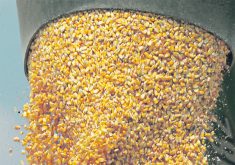BRUNO, Sask. – Sandy Lowndnes was emphatic when describing how producers should pronounce the acronym for the newly formed Saskatchewan Organic Livestock association.
It is not S-O-L, a term that could best describe the past performance of the sector; it is SOL as in the newly reborn soul of what will become a thriving component of the province’s cattle industry.
Lowndes was hired by Saskatchewan Agriculture to jumpstart what has been a lacklustre segment of organics.
“When I first started, people were frustrated because there were some marketing co-ops out there and they were having a tough go of it,” she said.
Read Also

Chinese, Indian tariffs take toll on pea prices
The disruption of pea exports from Canada’s largest customers will likely result in slow pea exports for the remainder of the crop year.
In addition to the frustration over long delays in receiving money for cattle marketed through some of the province’s co-ops, there was a sense of animosity and mistrust among players in the sector.
So one of Lowndes’ first tasks as the province’s organic livestock development specialist was to establish a producer-driven association designed to eventually provide a united voice for the industry, she told delegates attending last week’s Organic Update 2006 meeting in Bruno.
That process got under way when she put together SOL’s steering committee of 10 people, mostly producers, who will help chart a course for the organic livestock sector.
“I would see them as a strategy team and a communications central point,” said Lowndes.
A big part of the association’s mandate will be to expand markets by educating consumers on the benefits of eating organic meat.
But the group could also be the driving force behind other initiatives such as establishing what amounts to a floor price for the product and setting up finishing stations around the province.
Lowndes said by working together producers could agree that they won’t sell their product for less than a set price.
SOL could also spearhead a desperately needed quality initiative.
Most organic cattle producers come from cow-calf or backgrounder operations but are now forced to also be finishers because there are no organic feedlots in Western Canada.
That presents a problem for processors like Diamond 7 Meats, which must deal with product ranging from B to AAA grade. Most retailers are looking for a consistent supply of AAA organic beef and have little use for poorer quality cuts.
To address that shortcoming, SOL could help establish a handful of 2,000 to 3,000 head finishing stations in the province, said Lowndes.
While SOL isn’t intended to replace existing marketing operations like the Canadian Organic Livestock Association or Farmer Direct Co-operative Ltd., some of the directors have indicated they may be interested in eventually establishing their own new generation co-op that will market product directly to consumers.















